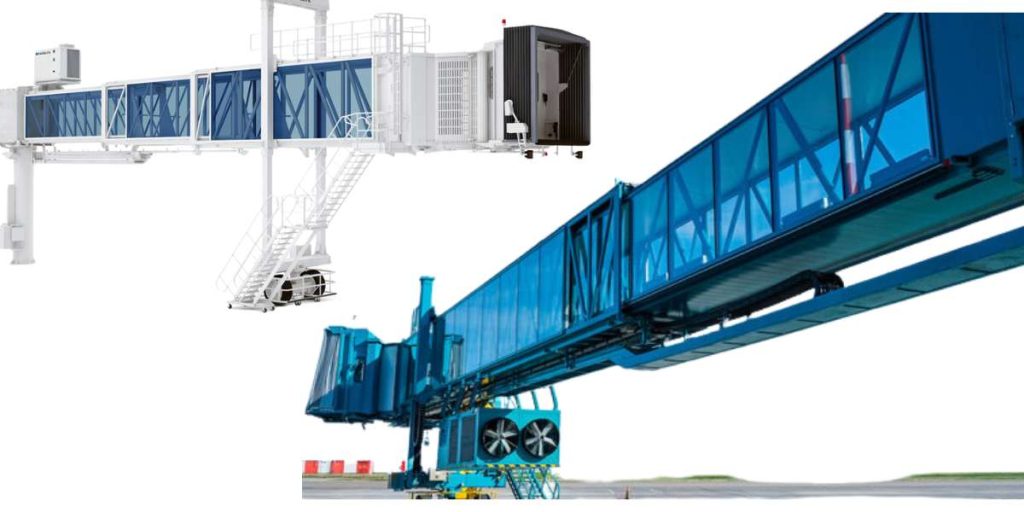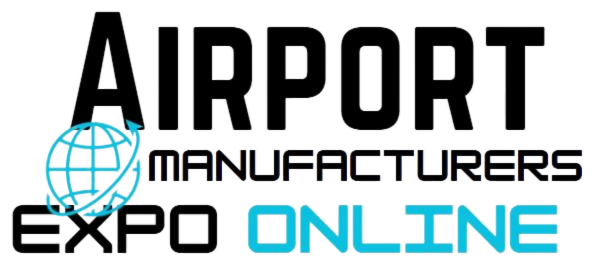Top Manufacturers Airport Passenger Boarding Bridges
You arrive at the airport, check in a breeze, and head to your gate. But how do you actually get on that colossal metal bird waiting to whisk you away? Enter the unsung hero of air travel: the Passenger Boarding Bridge (PBB), also known as a jet bridge, air bridge, or aerobridge.
PBBs are the enclosed, elevated passageways that connect airport terminals to aircraft doors. They’re the seamless link between the controlled environment of the terminal and the bustling world of the apron (the open area where airplanes are parked). But PBBs are far more than just glorified corridors. Airport manufacturers is marvels of engineering that provide a safe, efficient, and comfortable experience for passengers, while ensuring smooth aircraft operations.

The Guts of a PBB
A PBB is a complex machine, a symphony of interconnected systems working in concert. Here’s a peek behind the curtain:
- Docking System (Movable Bridges): These PBBs boast a marvel of mechanical ingenuity – a docking system that allows them to precisely connect to various aircraft door sizes. Imagine a giant robotic arm with a soft, inflatable cuff that seals perfectly against the aircraft door, creating a weatherproof connection.
- Fixed Telescopic Bridge: This rigid section bridges the gap between the terminal building and the movable section. It can extend or retract depending on the aircraft’s position.
- Rotunda: This is the curved section where the fixed and movable sections meet. It allows the PBB to rotate horizontally, ensuring a perfect alignment with the aircraft door, regardless of its parking angle.
- Telescopic Tunnels: These extendable passageways within the PBB bridge the gap between the rotunda and the docking system. They can be adjusted in length to accommodate different aircraft sizes.
- Elevation System: This powerhouse raises and lowers the entire PBB to match the aircraft door height. No more climbing precarious stairs – the PBB brings the boarding gate right to your aircraft!
- Cabin: The enclosed passenger walkway, the heart of the PBB. It’s typically climate-controlled, providing a comfortable environment for passengers regardless of the weather outside.
- Traction System: This system ensures smooth movement of the entire PBB structure, allowing for precise positioning and operation.
A Look at Different Types
PBBs aren’t a one-size-fits-all solution. Airports cater to a variety of aircraft, and PBB manufacturers have risen to the challenge with different bridge types:
- Apron Drive PBB: These are the most common type, featuring a tractor-like unit at the base that propels the entire bridge around the apron. They offer great flexibility for maneuvering around parked aircraft.
- Fixed Jet Bridge: As the name suggests, these bridges are permanently fixed to the terminal building and can’t move horizontally. They’re typically used for smaller aircraft at gates with limited space.
The Vital Role of PBBs in Modern Aviation
PBBs are more than just passenger comfort enhancers. They play a crucial role in the smooth operation of modern airports:
- Faster Boarding and Disembarking: PBBs significantly reduce turnaround times for aircraft. Passengers can board and disembark quickly, leading to increased efficiency and on-time departures.
- Weather Protection: PBBs shield passengers from the elements, rain or shine, scorching sun or freezing temperatures. This ensures a safe and comfortable boarding experience.
- Improved Safety: PBBs eliminate the need for passengers to walk on the tarmac, reducing the risk of accidents involving ground vehicles and aircraft.
- Accessibility for All: PBBs provide level access for passengers of all abilities, including those with mobility limitations.
The Future of PBBs
The world of PBBs is constantly evolving. Here are some exciting trends to watch out for:
- Automation: Expect to see more automated PBBs, capable of docking and retracting with minimal human intervention, improving efficiency further.
- Sustainable Design: Eco-conscious PBBs are being developed, focusing on energy-efficient operation and the use of recyclable materials.
- Passenger Experience Enhancements: Imagine interactive displays within the PBB cabin, providing real-time flight information or entertainment options.
The Silent Guardians of Your Journey
The next time you board a plane, take a moment to appreciate the silent guardian of your journey – the Passenger Boarding Bridge. It’s a testament to human ingenuity, ensuring a safe, efficient, and comfortable transition from the terminal to the skies.
FAQs
What are the different names for a PBB?
You might hear them called jet bridges, air bridges, aerobridges, or even sky bridges. They all refer to the same passenger walkway connecting the terminal to an aircraft.
Why are PBBs important?
PBBs offer a safe, efficient, and weather-protected way to board and disembark airplanes. They speed up turnaround times, improve passenger comfort, and reduce the risk of accidents on the tarmac.
Do all airports have PBBs?
While most major airports utilize PBBs, smaller airports with limited traffic or catering to smaller aircraft might use fixed boarding stairs instead.
